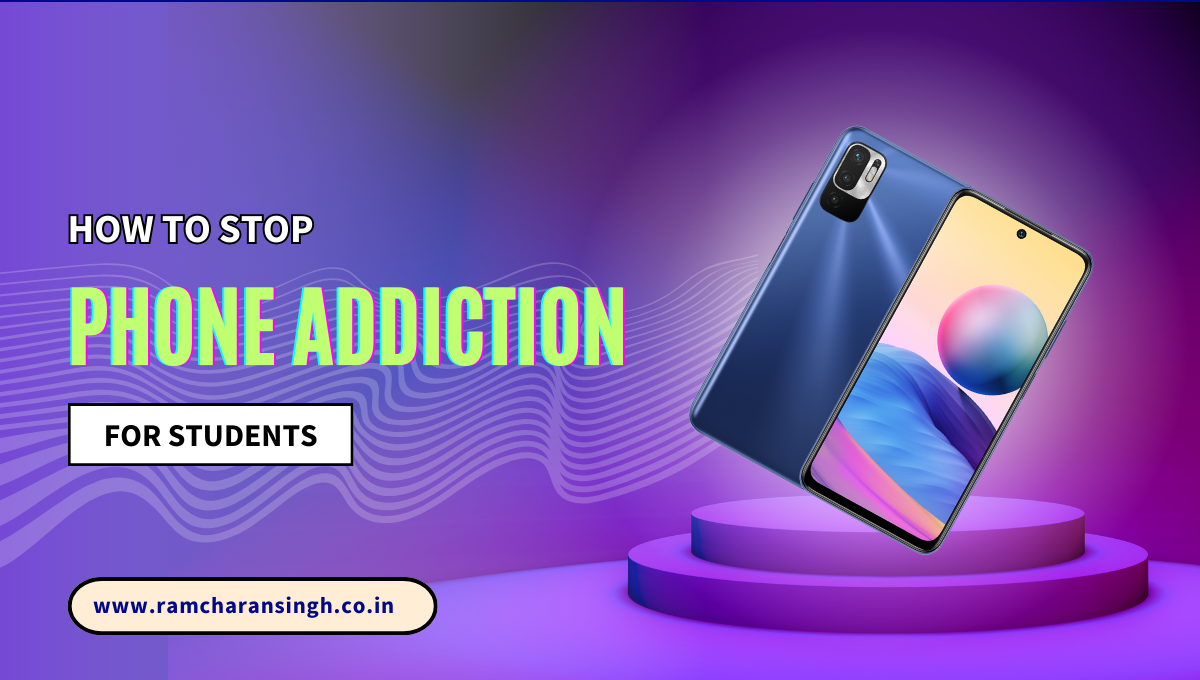In the digital age, smartphones have become an indispensable part of our lives, providing us with a wealth of information and connectivity at our fingertips. However, the excessive use of these devices, especially among students, has given rise to concerns about phone addiction. Understanding how to stop phone addiction for students is crucial for promoting healthy digital habits and ensuring academic success. In this article, we will delve into strategies and practices that can help students overcome their dependence on smartphones and cultivate a balanced relationship with technology.
Understanding Phone Addiction: Unraveling the Digital Dilemma
Phone addiction is a relatively new but rapidly growing concern in our modern society, and it’s particularly prevalent among the younger generation. The term ‘phone addiction’ might sound heavy, but it accurately describes the inability of individuals to disengage from their mobile devices, leading to a myriad of consequences that affect various facets of life.
Defining Phone Addiction: More Than Just Excessive Use
Phone addiction, or nomophobia (the fear of being without a mobile device), is characterized not just by the amount of time spent on the device, but by the impact it has on a person’s daily activities and mental state. It goes beyond the habitual checking of phones and enters the realm of compulsive and obsessive use.
Individuals with a phone addiction may find themselves reaching for their device the moment they wake up, and it’s often the last thing they interact with before sleep. The constant need to check notifications, scroll through social media feeds, and respond to messages creates a state of perpetual distraction.
In the quest to conquer the pervasive challenge of phone addiction among the youth, educators and parents alike have sought out various strategies to foster healthier digital habits. Addressing this, an insightful “How to Stop Phone Addiction for Students essay” delves into practical measures that can be implemented to mitigate the incessant pull of smartphones. This essay underscores the importance of setting clear boundaries, such as designated tech-free study times and phone curfews, to ensure that students can focus on their academic pursuits without the constant distraction of notifications and social media. Furthermore, it advocates for the incorporation of educational programs that teach students the value of digital moderation and the risks of excessive screen time. By cultivating an environment that encourages mindfulness and self-regulation, the essay presents a blueprint for students to reclaim their time and attention from the grips of phone addiction.
Recognizing the Signs: When Smartphone Use Becomes Problematic
Understanding how to stop phone addiction for students requires recognizing the signs. These may include:
- Compulsive Checking: Constantly checking the phone, even in inappropriate or dangerous situations such as while driving or crossing the road.
- Neglect of Responsibilities: Ignoring academic commitments, chores, or job responsibilities in favour of phone use.
- Disrupted Sleep: Using the phone late into the night, leads to sleep disturbances and insomnia.
- Social Withdrawal: Preferring online interactions over face-to-face connections, leading to isolation.
- Anxiety and Restlessness: Experiencing anxiety, restlessness, or irritability when separated from the phone or unable to use it.
The Psychology Behind Phone Addiction: Understanding the Triggers
Phone addiction is not just a habit; it’s often rooted in psychological needs and triggers. The instant gratification provided by smartphones, whether it’s through social media likes, messages, or notifications, triggers the release of dopamine, a neurotransmitter associated with pleasure and reward. This creates a feedback loop, encouraging repeated behaviour.
Social media platforms and various apps are designed to be addictive, utilizing algorithms and notification systems to keep users engaged. For students, the pressure to be constantly connected, fear of missing out (FOMO), and the desire for social validation play significant roles in driving phone addiction.
The Impact on Well-Being: Understanding the Consequences
Phone addiction can have severe implications on a student’s well-being. It can lead to decreased academic performance, as constant distractions and divided attention hinder the ability to focus and retain information. The blue light emitted by screens can disrupt sleep patterns, contributing to fatigue and decreased cognitive function.
The isolation resulting from excessive phone use can lead to feelings of loneliness, anxiety, and depression. Furthermore, the constant comparison with others on social media can lead to low self-esteem and body image issues.
Towards a Balanced Digital Life: Laying the Groundwork for Change
Understanding phone addiction is the first step towards addressing it. By recognizing the signs, understanding the psychological triggers, and being aware of the impact on well-being, students, educators, and parents can work together to foster healthier digital habits.
In the following sections, we will delve into practical strategies and practices that can help mitigate phone addiction, empowering students to take control of their digital lives and strike a balance that promotes their academic success and overall well-being.
Strategies to Overcome Phone Addiction: How to Stop Phone Addiction for Students?
- Set Clear Boundaries: Establish specific times for phone use and stick to them. For instance, designate certain hours of the day for studying, family time, and other activities that do not involve phone usage. Creating a schedule can help students develop discipline and prioritize their responsibilities.
- Implement Phone-Free Zones: Encourage students to create phone-free zones in their environment, particularly in places where concentration is required, such as study areas, classrooms, and the dinner table. This helps in reducing distractions and improving focus.
- Use Technology to Your Advantage: There are various apps designed to monitor and limit phone usage. Apps like Freedom, Stay Focused, and Forest helps students track their screen time and block access to distracting apps during designated periods.
- Engage in Offline Activities: Promoting engagement in offline activities such as sports, hobbies, and social interactions can provide students with healthy alternatives to phone usage. Encouraging participation in clubs, workshops, or community service can also help in diverting their attention from the digital world.
- Educate on the Impact of Phone Addiction: Providing students with information on the negative effects of excessive phone use on their physical, mental, and academic well-being can foster awareness and motivate them to reduce their screen time.
- Practice Mindfulness and Self-Reflection: Encouraging students to practice mindfulness can help them become more aware of their phone usage patterns and the triggers that lead to excessive use. Keeping a journal to reflect on their daily phone use, identifying moments when they felt compelled to reach for their device, and noting how they felt afterward can be a powerful tool for change.
- Establish a Night time Routine: Excessive phone use before bedtime can lead to sleep disturbances. Encouraging students to establish a night time routine that involves putting away their phone at least an hour before sleep can promote better sleep quality.
- Foster Real-Life Connections: Promoting the importance of face-to-face interactions and encouraging students to spend quality time with family and friends can help in reducing the reliance on virtual communication.
- Lead by Example: Parents and educators play a crucial role in shaping students’ behavior. Demonstrating balanced phone use and engaging in phone-free activities can serve as a positive example for students to follow.
- Seek Professional Help if Necessary: If phone addiction is severely impacting a student’s life, it may be necessary to seek the help of a mental health professional who specializes in behavioural addictions.
Conclusion
Understanding how to stop phone addiction for students is vital in today’s digital era. By setting clear boundaries, creating phone-free zones, using technology mindfully, engaging in offline activities, educating students on the impact of phone addiction, practising mindfulness, establishing a healthy nighttime routine, fostering real-life connections, leading by example, and seeking professional help when necessary, students can learn to cultivate a balanced relationship with their smartphones. This not only promotes their academic success but also contributes to their overall well-being, paving the way for a healthier and more fulfilled life.
Share this on .....



